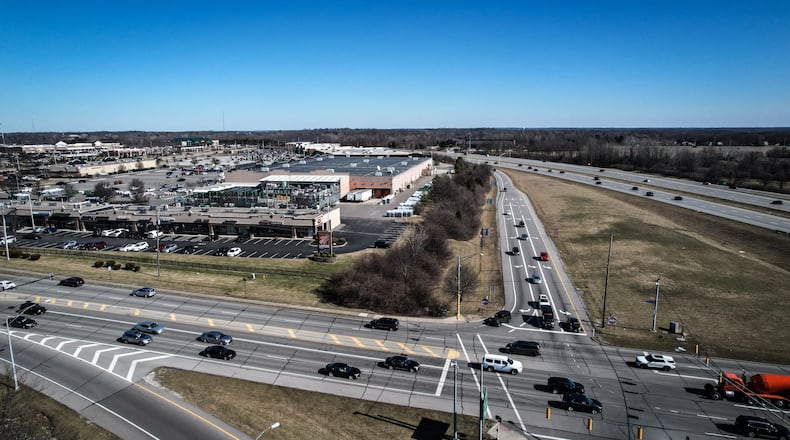“In the Dayton area, TRIP estimates that each year, the average motorist is spending 30 hours stuck in traffic due to traffic congestion and wasting 12 gallons in fuel, costing the average commuter in the region $627 annually,” said Rocky Moretti, TRIP director of policy & research.
That’s markedly better than Columbus, Cleveland and Toledo, all of whom exceed three dozen hours stuck in traffic and Cincinnati, where motorists spend 48 hours, or two full days stuck in traffic each year.
Traffic congestion annual impact in Ohio
| Location | Driver hours Lost | Cost Per Driver | Gallons of Fuel Wasted |
|---|---|---|---|
| Cincinnati | 48 | $1,157 | 24 |
| Columbus | 46 | $1,099 | 20 |
| Cleveland-Akron | 40 | $938 | 21 |
| Toledo | 37 | $789 | 20 |
| Dayton | 30 | $627 | 12 |
Credit: JIM NOELKER
Credit: JIM NOELKER
The TRIP report suggests that about 31% of Ohio’s major locally and state-maintained roads are in what it calls a deteriorated state (16% in poor condition and 15% in mediocre condition). But the report says that in bigger cities, road conditions are much worse than in rural areas.
TRIP lists the Dayton area with 55% of major roads are in poor or mediocre condition (28% poor, 27% mediocre ... the other categories are fair and good). It shows Cincinnati and Cleveland-Akron slightly worse than Dayton, and lists Columbus and Toledo roads in better condition than Dayton’s.
TRIP says the average Dayton area driver pays $675 annually in additional vehicle operating costs as a result of driving on rough roads.
“TRIP’s report finds that increased federal state transportation dollars are allowing the state to complete needed projects to repair Ohio’s roads and bridges, relieve traffic congestion and improve traffic safety,” Moretti said. “But inflation and highway construction costs and a potential decline in fuel tax revenues will likely impact the state’s ability to fund roadway improvements at a time when highway travel in Ohio has returned to pre-pandemic levels.”
During the first nine months of 2023, vehicle miles traveled in Ohio were 2% higher than the first nine months of 2022, returning Ohio to pre-COVID levels, Moretti said.
ODOT road ratings don’t match TRIP ratings
Ohio Department of Transportation spokesman Matt Bruning told the Dayton Daily News that ODOT uses a different rating system, with only three categories (poor, fair and good).
Bruning clarified that ODOT is not responsible for all Ohio roads and bridges. But he said ODOT’s rating for the roads it controls is much better than the rating TRIP listed.
“On the state and U.S. routes outside municipalities and all interstates, except the Ohio Turnpike that ODOT is responsible for, we leverage a Pavement Condition Rating System (PCRS) that requires specially trained staff to physically assess pavement conditions,” Bruning said.
While a specific breakdown for the Dayton area was not available, Bruning said the PCRS data showed less than 1% of ODOT’s highway system is considered poor, with 70% good and 29% fair.
For non-interstate systems, less than 2% are considered poor, while 51% are rated good and 47% are fair, Bruning said. As for bridges, ODOT has 61% rated good, 37% as fair and less than 2% as poor.
Both non-interstate systems and bridges have steadily improved since 2014, Bruning said.
Major road projects locally
Due to additional federal and state funding, ODOT plans to move forward with $1.4 billion in major construction projectsthrough 2026. That, TRIP said, includes two area projects: U.S. 35-Valley/Trebein interchange construction that’s been underway in Greene County and the widening of Ohio 63 in Warren County.
The Greene County project involves replacement of the existing U.S. 35-Valley/Trebein traffic light intersection with a highway interchange and overpass of Valley-Trebein over U.S. 35. ODOT District 8 spokeswoman Kathleen Fuller said construction began in March and is scheduled for completion in October 2025. The cost is approximately $40.1 million.
Sponsored by the Warren County Transportation Improvement District, or TID, the widening of Ohio 63 in Warren County will be from Union Road at Monroe to just east of the Ohio 741 intersection. Construction is scheduled to begin in spring 2024 and wrap up in October 2025, according to ODOT. The cost is approximately $19.8 million.
The TRIP report also points to unfunded projects across Ohio, including possible transportation improvements in the area of Interstate 675 and Wilmington Pike
ODOT continues to work with the Montgomery County Transportation Improvement District to evaluate improvements at the busy interchange. Proposals were presented during an open house last summer, and a consultant is still working to finalize a feasibility study, Fuller said.
While no Dayton area road made top 10 lists of the most congested portions of Ohio highways during weekday morning and afternoon peak travel hours, a 3.3-mile stretch of westbound Interstate 70 between Kimmel Road and Brookville Phillipsburg Road is listed at number 8 on a list of the state’s top 10 truck bottlenecks.
The report notes that each year, $1.1 trillion of goods are shipped to and from sites in Ohio. The state’s highways carry the largest share of that travel and by 2050 the value adjusted for inflation of freight moved in Ohio is going to increase by 98% and by weight by 42%, Moretti said.
“Ohio continues to make significant progress in improving its transportation system to keep people safer in Ohio and keep the system more reliable, but between inflation and a return of a significant vehicle travel, the state will face challenges in the future in continuing to address those needs,” he said.
About the Author



